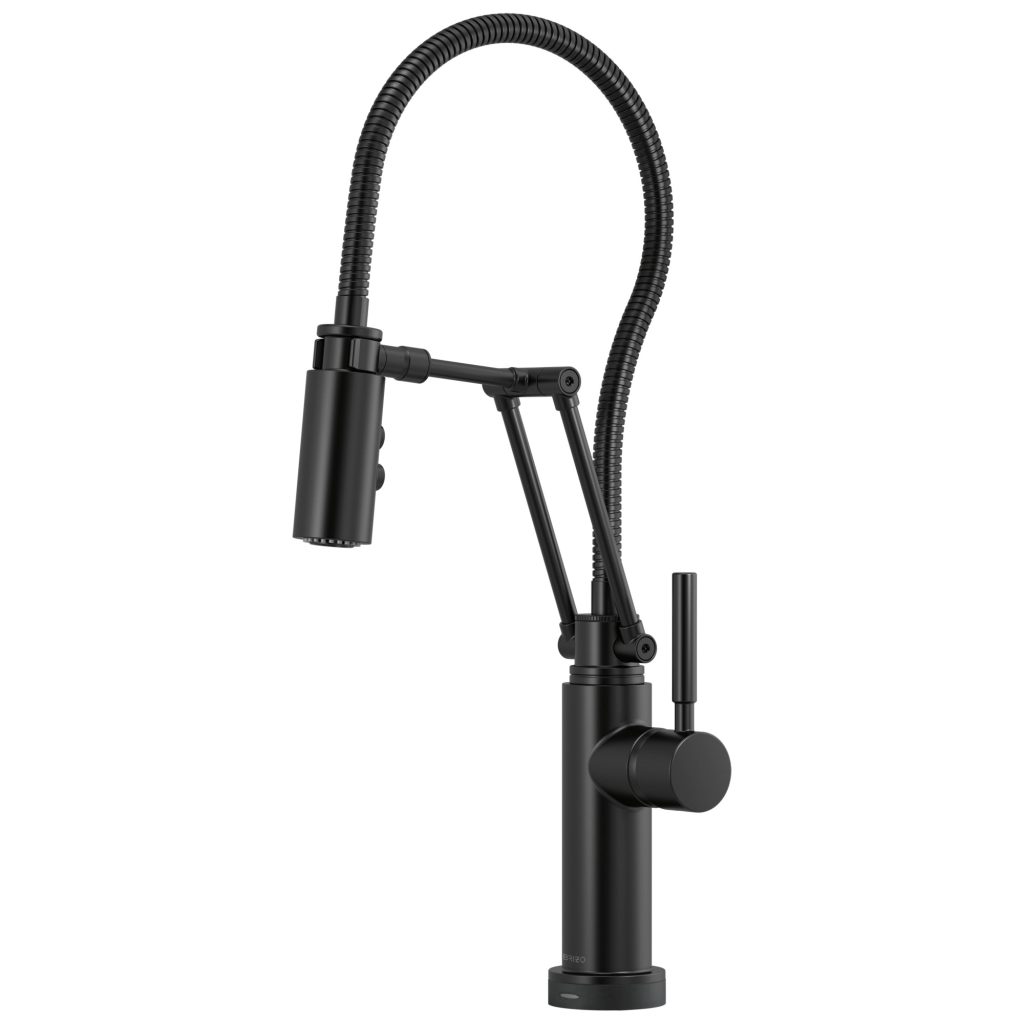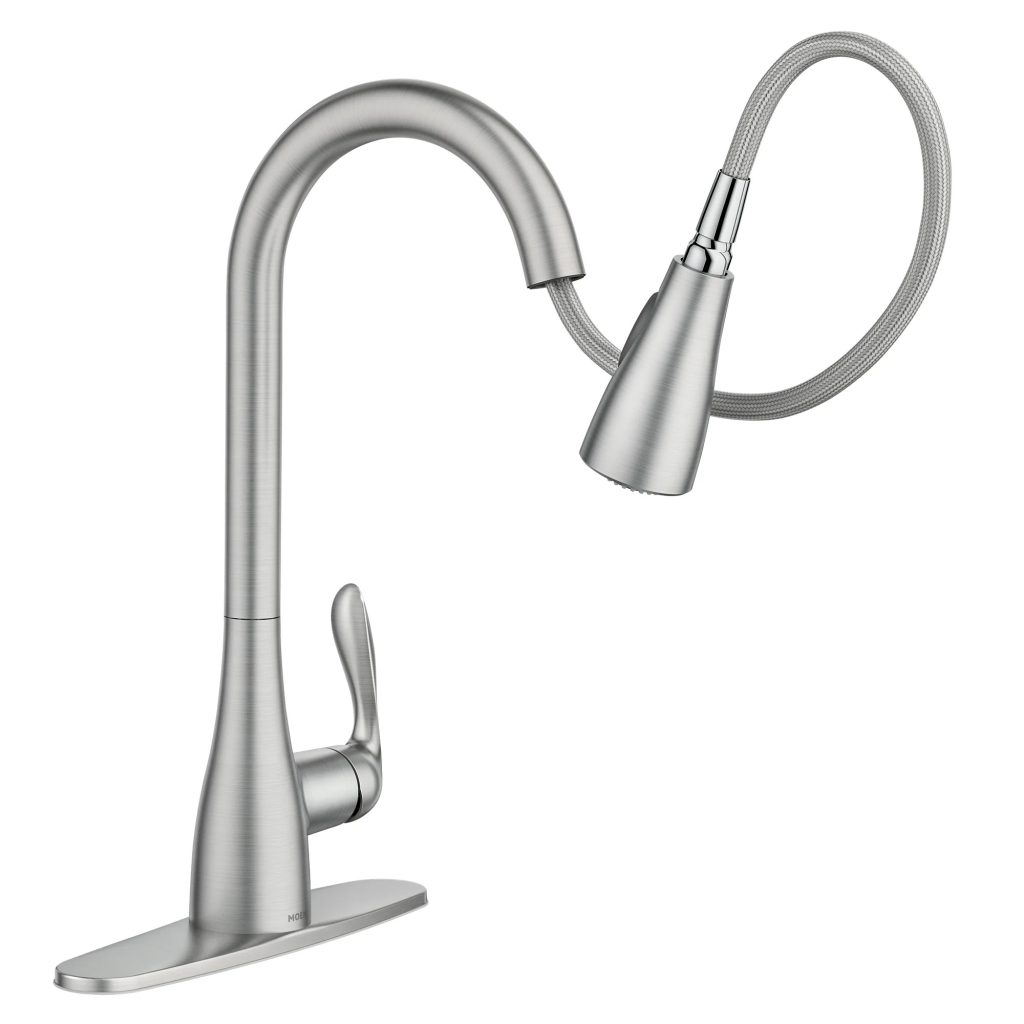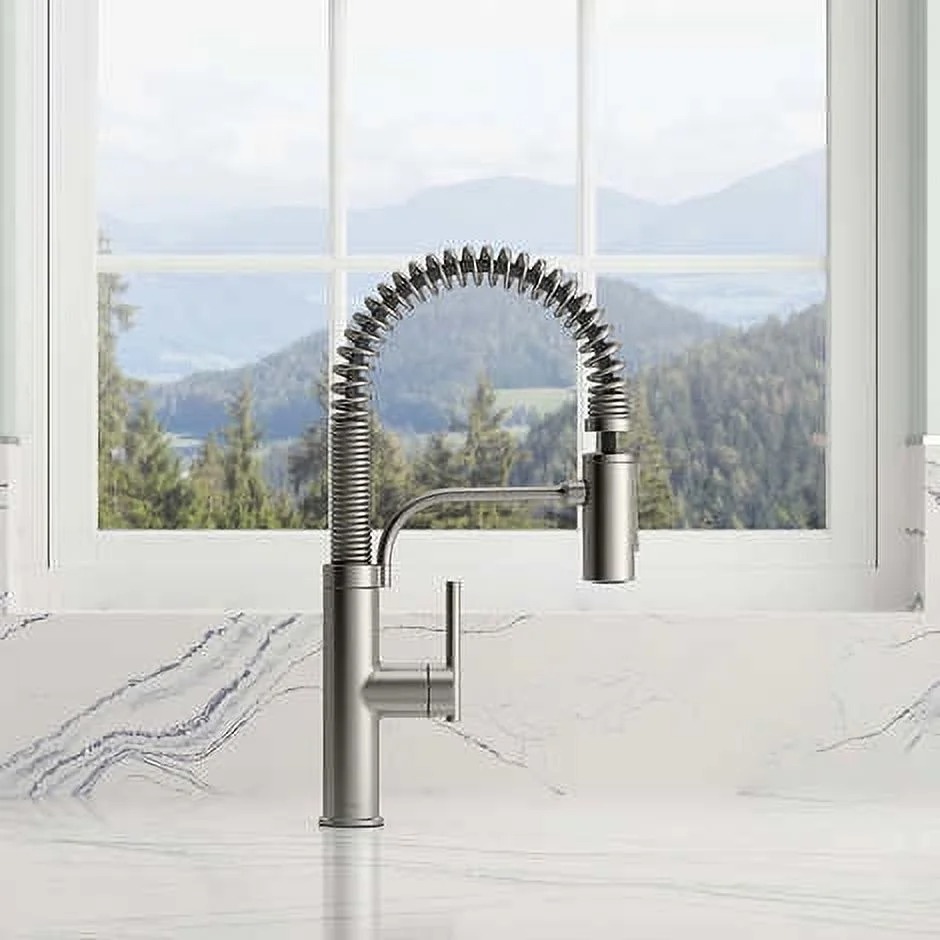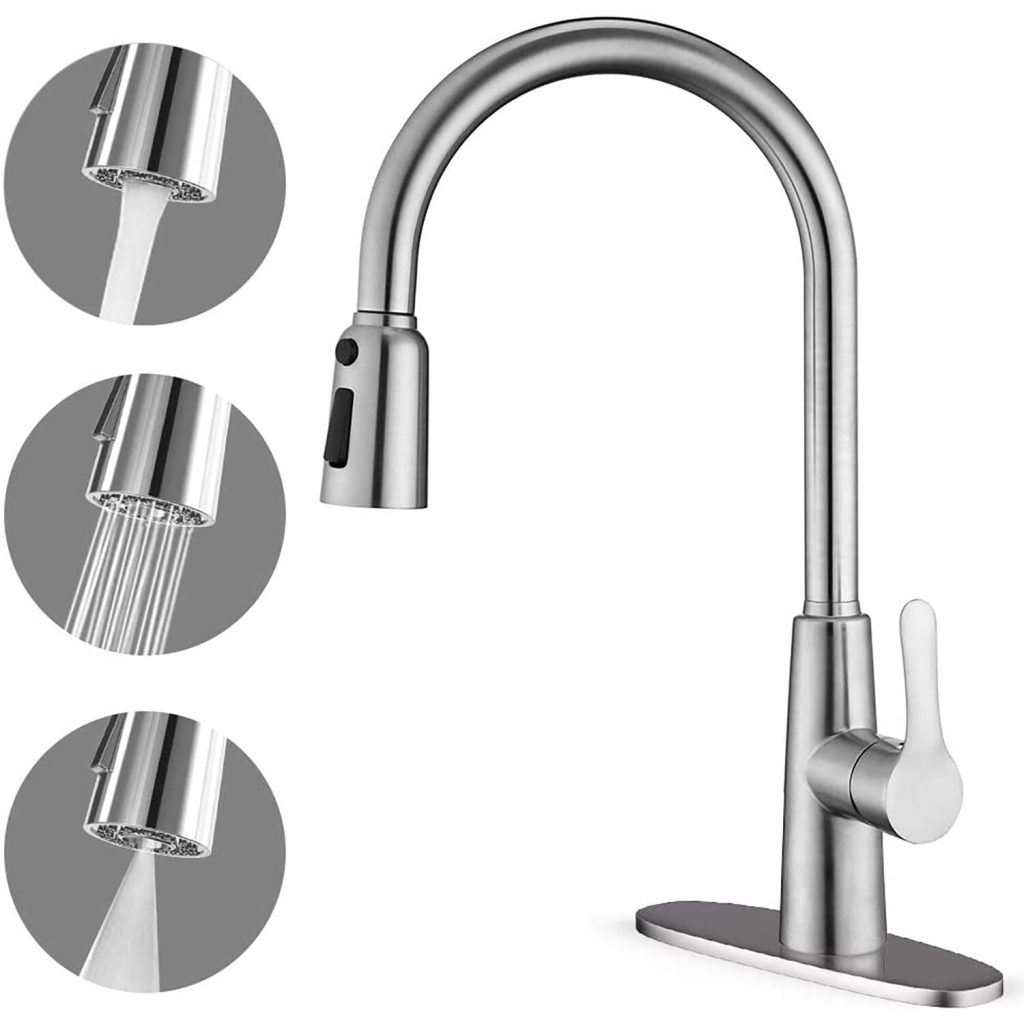When to Start Dripping Your Faucets
Taking the right steps before a let faucets drip can protect your plumbing. It’s crucial to know when to start dripping your faucets to prevent pipes from freezing. Begin as soon as the forecast shows a plunge in temperature, especially below 32°F (0°C).

Identifying the Right Temperatures for Action
Experts advise letting faucets drip once outside temperatures near 20°F (-6.6°C). This simple action can save your pipes from bursting due to freezing water which expands and needs space. It’s a preventive measure to avoid costly repairs.
Recognizing Vulnerable Pipes in Your Home
Pipes along exterior walls or in uninsulated areas like attics and basements need attention. Let faucets drip that are connected to such pipes to prevent them from freezing. Open cabinet doors to encourage warm air circulation around the pipes.
Which Faucets to Drip During Winter
When winter’s chill sets in, it’s key to know which faucets to drip. This prevents pipes from freezing.
Factors Influencing Faucet Selection
Several factors affect which faucets you should drip:
- Location of pipes: Drip faucets on pipes along exterior walls or unheated spaces.
- History of freezing: Previous issues with freezing suggest those lines need dripping.
- Type of faucets: If possible, choose ones controlling hot and cold water separately.
Plumbing experts suggest focusing on vulnerable areas to keep pipes from bursting.
Impact of Home Layout on Faucet Selection
Your home’s design plays a role in which faucets to drip:
- Multi-floor homes: Drip at least one faucet on each level.
- Homes with extensions: Pay special attention to faucets in added areas.
- Separate wings: In large homes, ensure distant sections have a dripping faucet.
Allowing a faucet to drip in each area ensures widespread protection against freezing. With these steps, you’re on your way to safeguarding your home during the cold months.
Preparing Outdoor Hose Bibbs and Faucets
As winter approaches, taking care of outdoor hose bibbs and faucets is essential to prevent freezing. Unlike indoor faucets, these outdoor fixtures face direct exposure to the cold and require different steps for protection.
Necessary Steps to Prevent Outdoor Faucets from Freezing
Preventive steps can save your outdoor faucets from winter’s harsh effects. First, disconnect and drain all garden hoses. Water left inside can freeze, causing hoses and pipes to burst. Cutting off the water supply to outdoor faucets is next. Once shut off, open the faucet to drain any remaining water. These actions keep your outdoor plumbing safe during the freeze.
The Benefits of Using Faucet Covers
Faucet covers offer added protection for your outdoor fixtures. They provide insulation, keeping residual heat around the faucet. This can prevent freezing and reduce the chance of damage. Faucet covers are simple to install, affordable, and reusable. In climates that rarely experience harsh freezes, covers can be an effective alternative to complete draining. Always ensure faucet covers fit snugly and offer suitable insulation to be effective.

The Common Faucet Dripping Mistake to Avoid
Many homeowners know to let faucets drip. Yet, one common error often occurs. They forget a crucial step. Dripping both hot and cold water is key. It ensures all pipes stay safe. This avoids the expansion and bursting of pipes. It’s an easy fix to a potentially big problem. Read on to find out how to do it right.
Understanding the Importance of Dripping Both Hot and Cold Water
Dripping both hot and cold water is critical. It protects your entire plumbing system. All pipes benefit from the flow of water. This reduces the chance of freezing. Don’t miss this step. It’s essential for safeguarding your home’s plumbing in winter.
Best Practices for Dripping Faucets Correctly
Dripping faucets doesn’t require much effort. Just a slight turn of the handle will do. Aim for a steady, slow drip. One to two drops per second is perfect. For single-handle faucets, set the handle to the middle. This allows both hot and cold water to flow. Simple adjustments like this can save you from costly repairs later.
Insulating Pipes to Complement Dripping Faucets
Proper insulation is as vital as letting faucets drip. It adds an extra layer of protection to prevent freezing.
Using Heating Cables and Foam Insulation
Insulate your pipes by wrapping them with heating cables and foam. Heating cables keep pipes warm. Foam retains the heat, discouraging freezing.
Heating cables auto-adjust temperature to prevent overheating. They are simple to install. Just wrap them around the pipe and plug them in.
Foam insulation comes in tubes. You can cut it to fit over pipes. This method is cost-effective and efficient.
Together, cables and foam are powerful against extreme cold.
Long-Term Pipe Protection Techniques
For lasting protection, consider more permanent solutions. Insulate all accessible pipes in your home.
Re-route pipes away from cold zones if you can. This step requires a professional but pays off in safety.
Seal leaks in walls and foundations. Cold air entering can freeze pipes swiftly.
Check insulation annually. Replace it if it’s damp or damaged. Good maintenance prevents costly repairs.
These steps, along with dripping faucets, will safeguard your pipes from winter’s harsh realities.

FAQs on Preventing Frozen Pipes
To prevent pipes from freezing, consider these frequently asked questions and their straightforward answers.
The Role of Shutting Off Water and Draining Pipes
Turning off water and draining pipes can avoid freezing. Do this when you anticipate a freeze or if you’ll be away. Open faucets after shutting off the main supply to drain them. This leaves no water that could freeze and cause pipe damage.
Ideal Indoor Temperature to Prevent Freezing
Keep your home at least 55°F to stop pipes from freezing. This temp is warm enough to prevent inner pipes from freezing, especially in unheated areas. Adjust your thermostat to this setting, especially when away for a long time.
What to Do If
Pipes Have Already Frozen
If pipes freeze, thaw them cautiously to prevent bursting. Use warm cloths or a hair dryer on low heat. Do not use open flames. Keep the faucet open as you do this to let water flow. Start from the faucet end and move backward to the coldest part. Seek professional help if you’re unsure.
Advantages of faucets drip
Faucet drip systems, often associated with irrigation or water management solutions, are designed to deliver water in a slow, controlled manner. While the term “faucet drip” might initially sound like a problem (e.g., a leaking faucet), it can also refer to intentional drip systems used in gardening, agriculture, or household applications. These systems offer numerous benefits, ranging from water conservation to enhanced plant health and ease of use.
Water Conservation and Efficiency
One of the most significant advantages of faucet drip systems is their ability to conserve water, making them an environmentally friendly choice.
Precise Water Delivery
Drip systems deliver water directly to the base of plants or targeted areas, minimizing wastage caused by evaporation, runoff, or overspray. This precision ensures that every drop of water is utilized effectively.
Reduced Water Usage
Compared to traditional sprinkler systems or hand-watering methods, faucet drip systems use significantly less water. Studies have shown that drip irrigation can reduce water consumption by up to 50%, making it ideal for areas facing water scarcity or drought conditions.
Prevents Overwatering
Overwatering is a common issue in gardening and agriculture, leading to root rot, nutrient leaching, and unhealthy plants. Drip systems provide a steady, measured flow of water, ensuring plants receive just the right amount without excess.
Enhanced Plant Health and Growth
Faucet drip systems contribute to healthier plants by delivering water and nutrients directly to the root zone, where they are most needed.
Deep Root Development
By slowly dripping water into the soil, these systems encourage roots to grow deeper in search of moisture. Deep root systems make plants more resilient to drought and extreme weather conditions.
Minimized Fungal Diseases
Traditional watering methods, such as overhead sprinklers, often wet plant leaves, creating a breeding ground for fungal diseases. Drip systems avoid this issue by focusing water delivery at the base of plants, keeping foliage dry and healthy.

